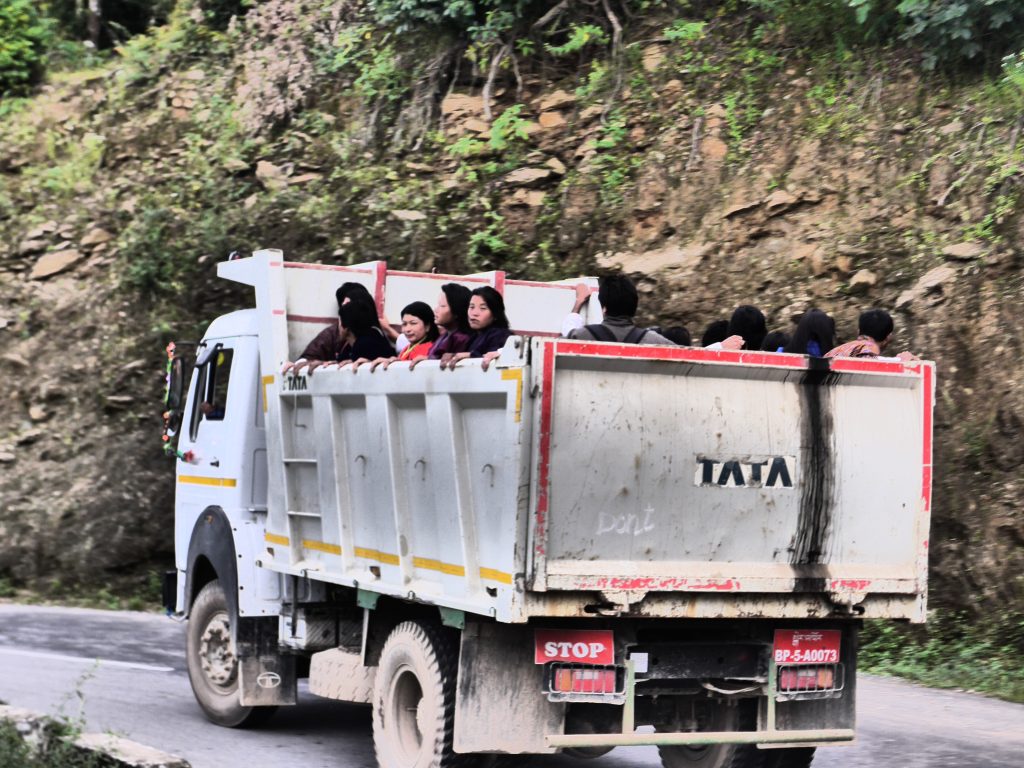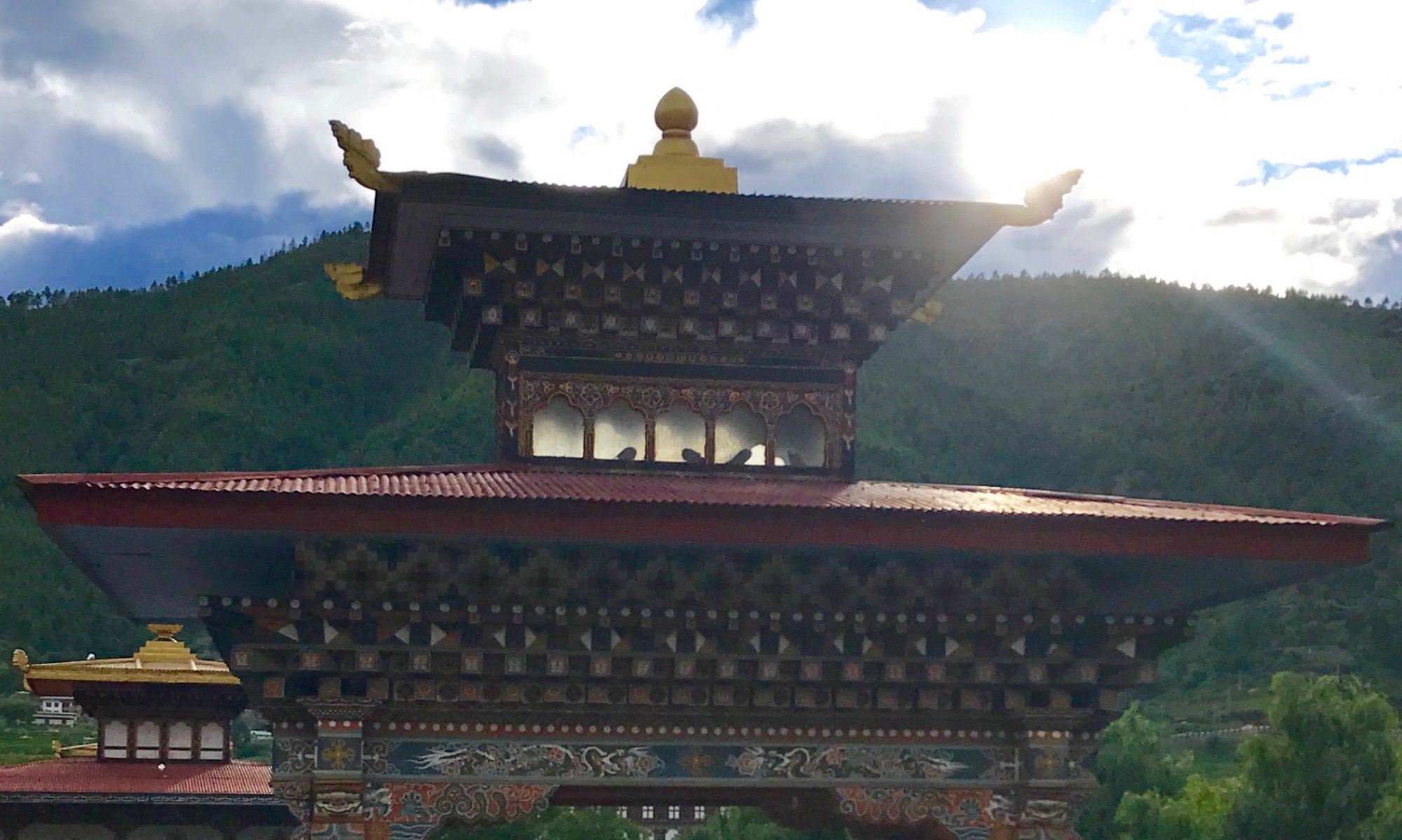The events of the day were all laid out in the invitation.
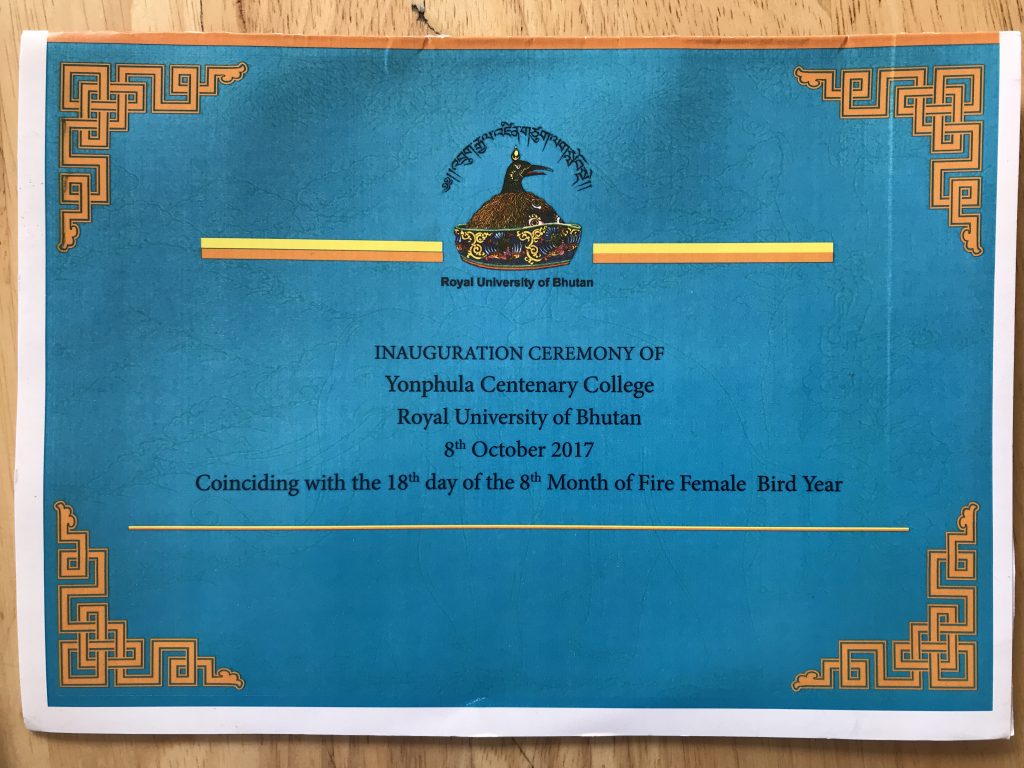
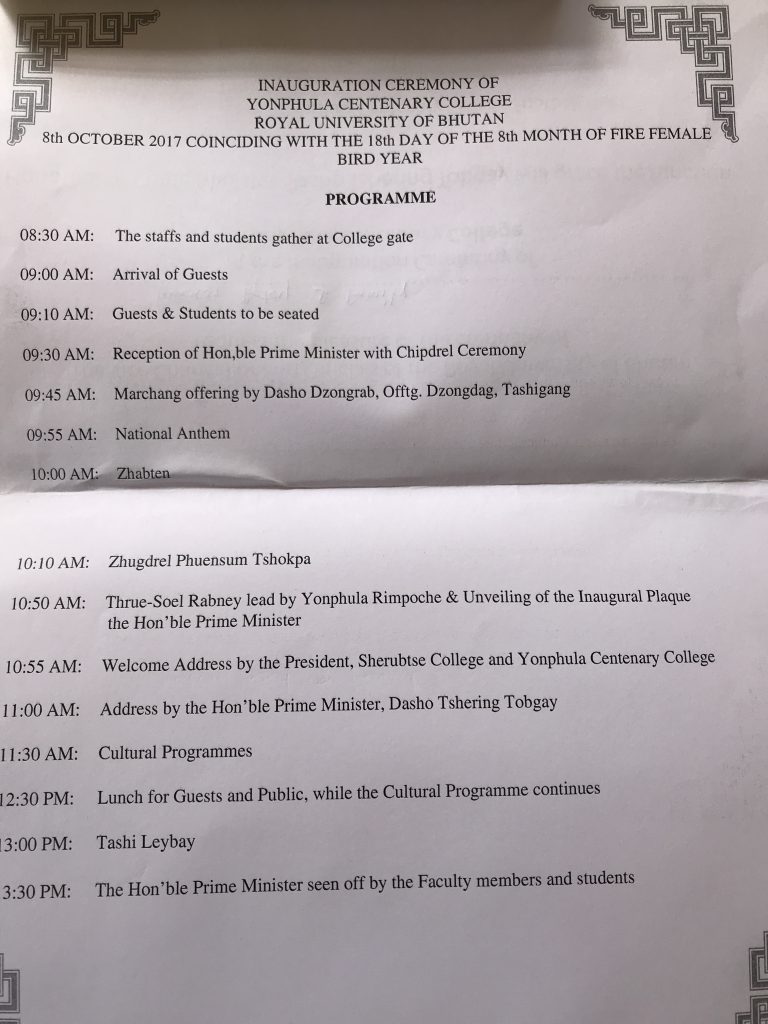
Chencho, having loaned me clothes for the day, took us in hand to guide us through preparations for the inauguration. She loaned me her clothes, and she got up early Sunday morning to come and help us all get dressed.
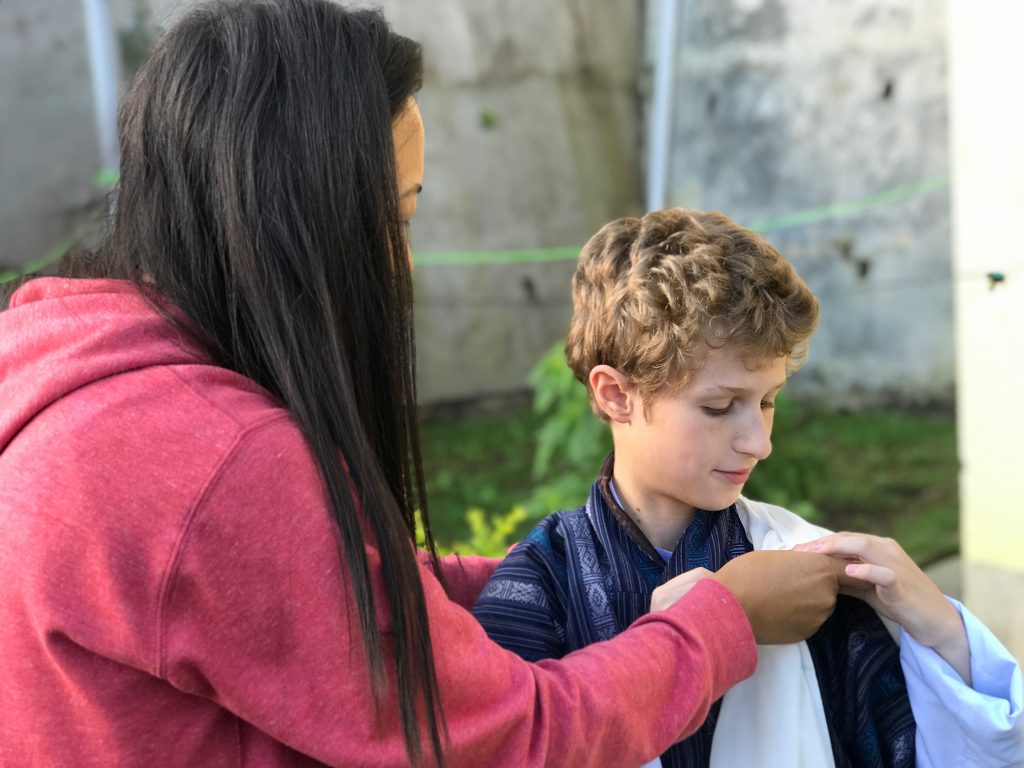
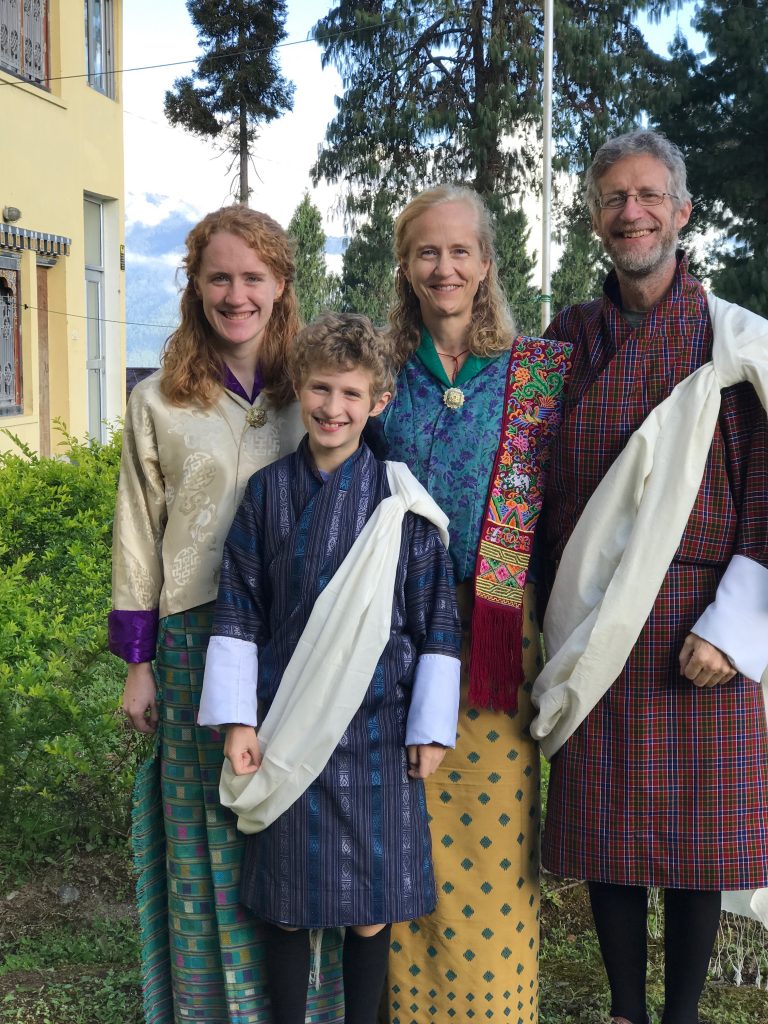
Chitra (photo below) drove up the mountain with other colleagues, so the whole family was able to ride up in the truck with Pema.
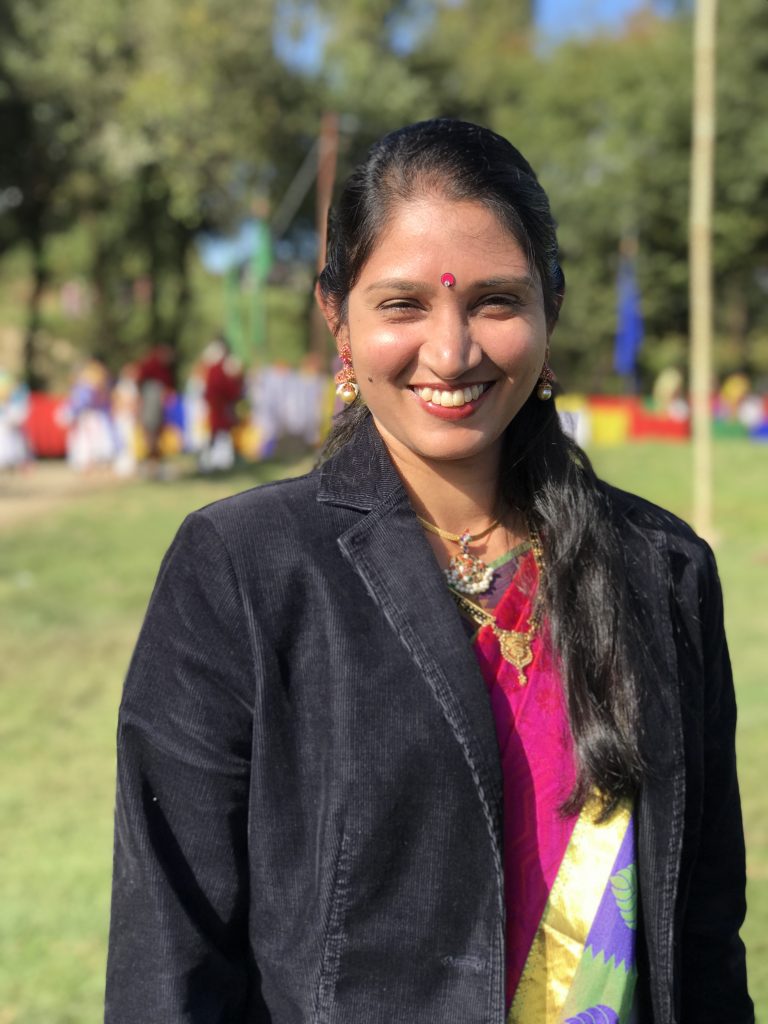
When we arrived, my students came to greet us—about the same time that the dancers were also arriving to (wait in order to) welcome the prime minister. Many photos were taken.
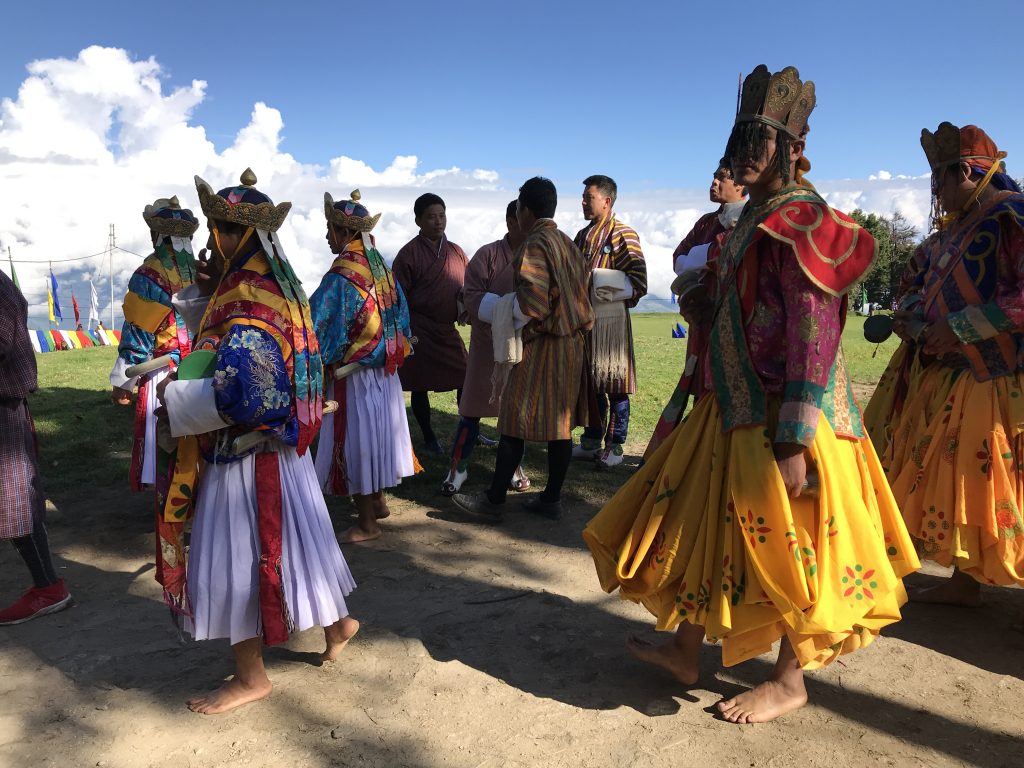
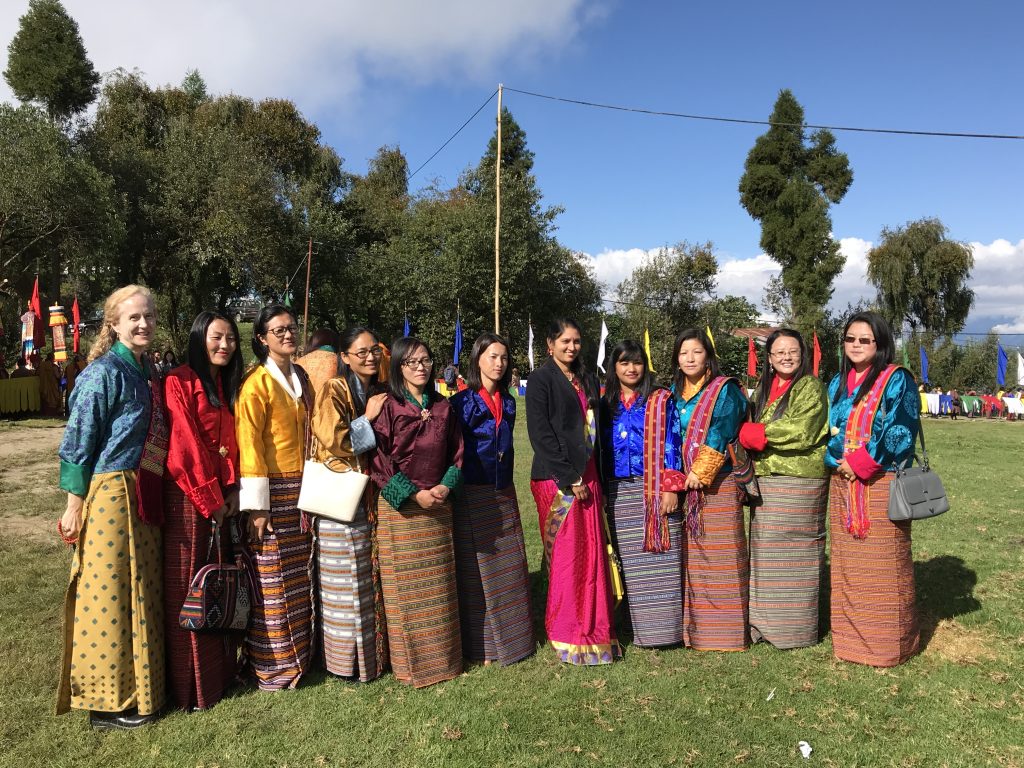
Notice how I loom in this photo–and of course, I look like I’m crossing a river.
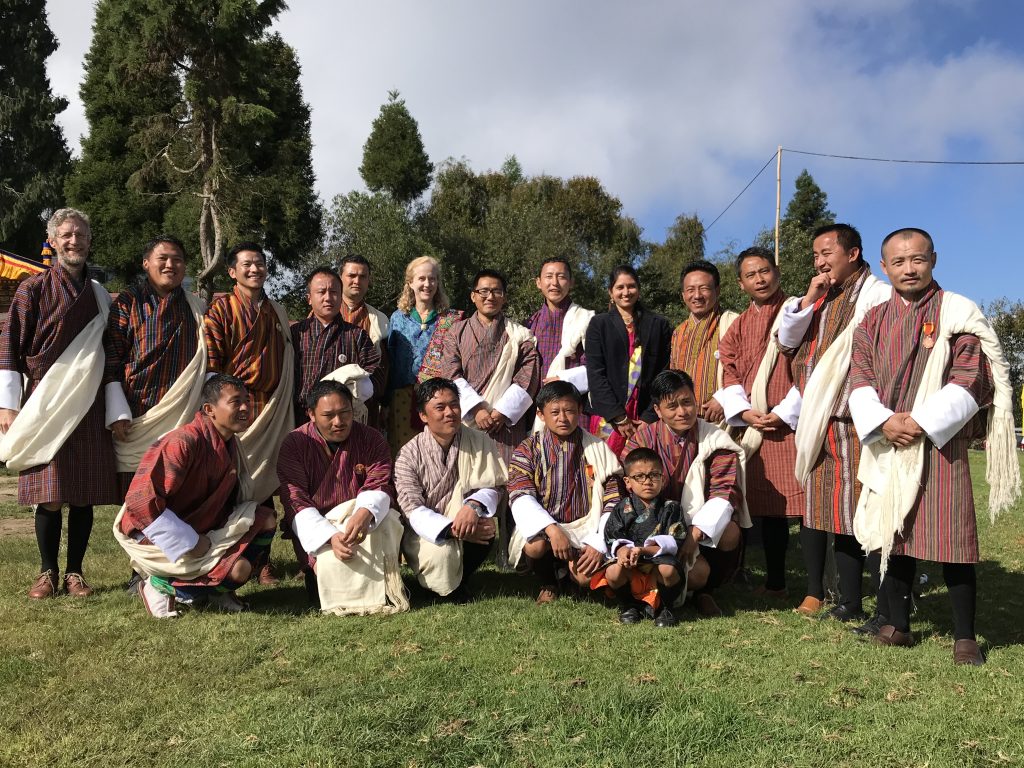
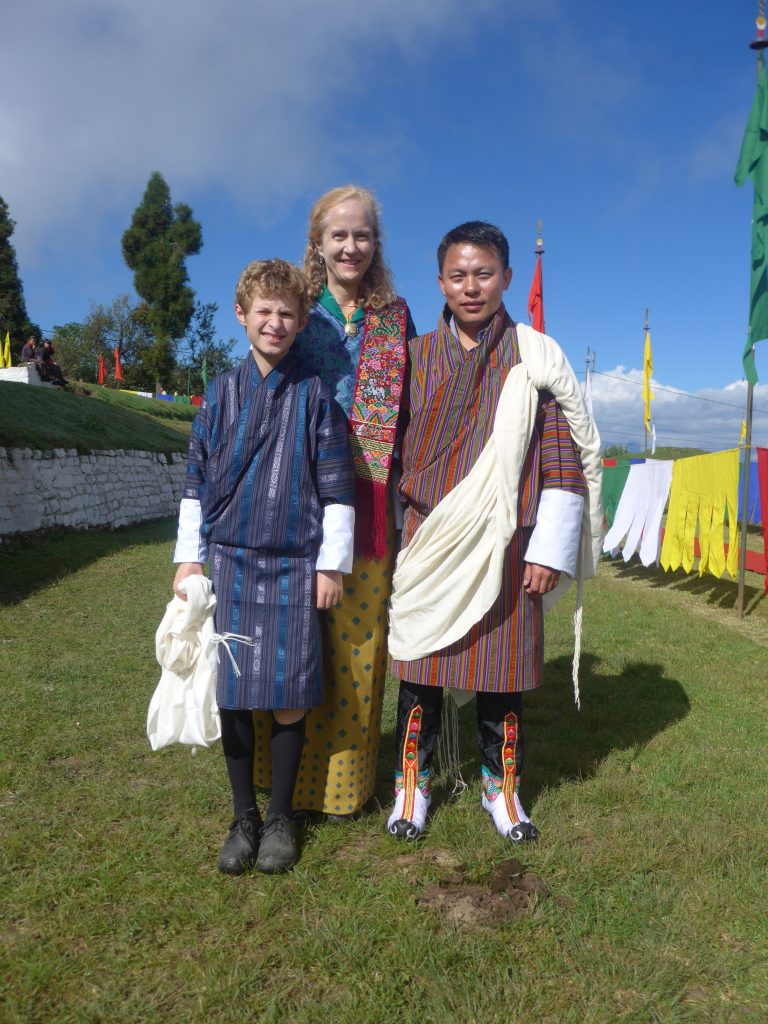
Jeremy and I with Tshering Thinley, the Dean of Yonphula Centenary College.
There were two sets of dancers: one set in yellow, one set in white and blue. I’m still trying to work out the difference….
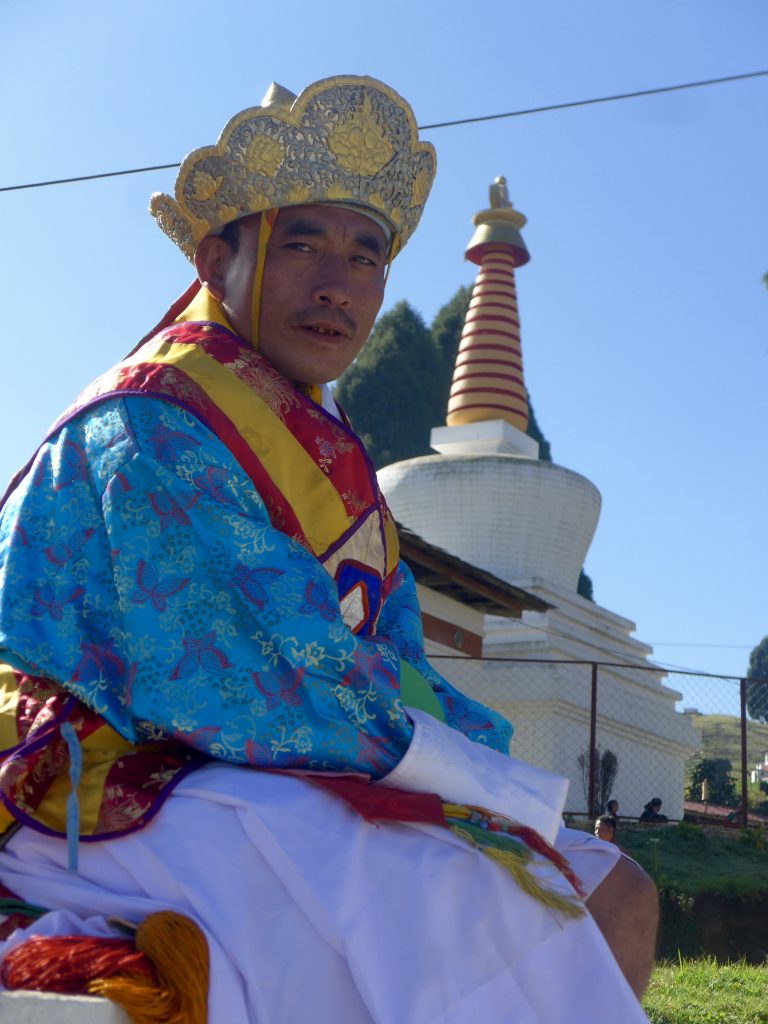
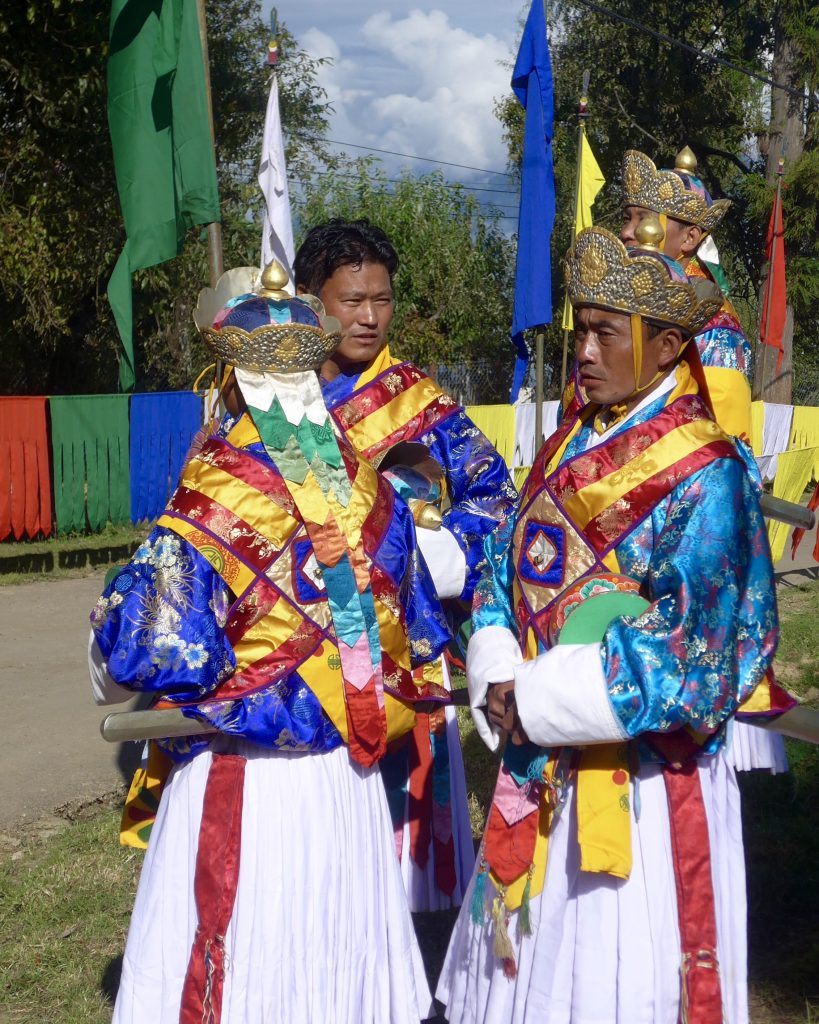
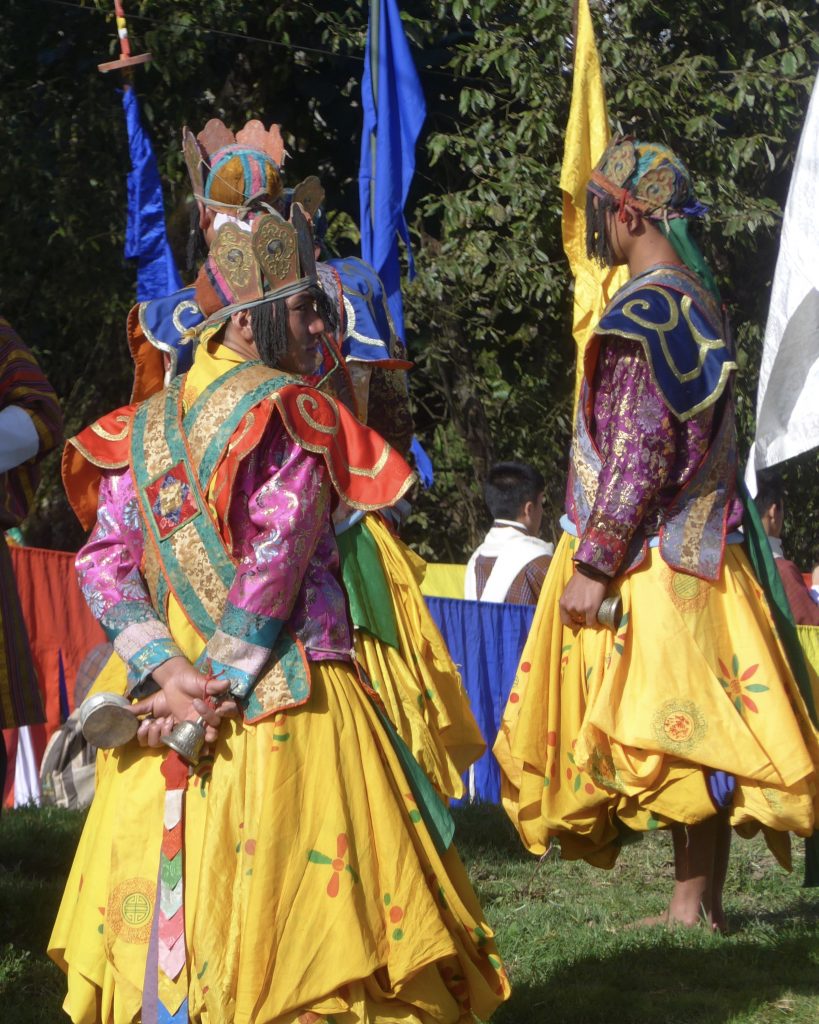
The ceremony began with chibdral, which is the welcoming procession. In the olden days (or perhaps for a member of the royal family today), this would have been led by a dignitary carrying a white scarf, followed by a riderless stallion or stallions, bearing cloths of ceremonial importance. Our procession started with men in red ghos beating drums followed by a series of flag bearers. According to Karma Rigzen (2011), the flags include
Chogdar (directional flag),
Tsendar (a series in which each flag is associated with a particular deity),
Rudar (coy flag),
darneynga (five coloured flags) and
Gyaldar (victory banner).
Armoured marchers (scouts in our case) and Pa Chham dancers follow the flag bearers, and behind them walk high profile officers (my students seemed to fall in this category). Next come a group of people carrying various religious items: I’ll spare you the details. Following these individuals is the Kudrung (monk prefect), who claps his hands in order to alert the entourage of arriving chief guest the ground, signifying control over the area. Next comes the chief guest: I almost missed his arrival, amid all the other moving parts.
“During the course of the procession, Pawo dancers line either side of the chibdral (procession) as it moves along. The dancers hold small drums in their hands and call attention to the chief guest and create a pleasing environment around him. As the procession enters the ceremony venue, those persons carrying the Chogdar, Tsendar, Rudar and Darna Nga flags stand behind the official who is being promoted or honoured. To the right is a line of dancers and singers, office people and divisional heads. On the left side are the team of escorts and people carrying the official’s belongings. The official who is promoted stands between the two lines and in front of the bearers, where he remains while until the conclusion of the marchang ceremony.”
Here’s a link to a rough clip of the procession (the people crossing in front of the camera in the middle bit are mostly my students):
Marchang is a ceremony following chibdral, and is an offering of alcohol to deities and teachers to secure blessings for the removal of obstacles, and for successful outcomes.
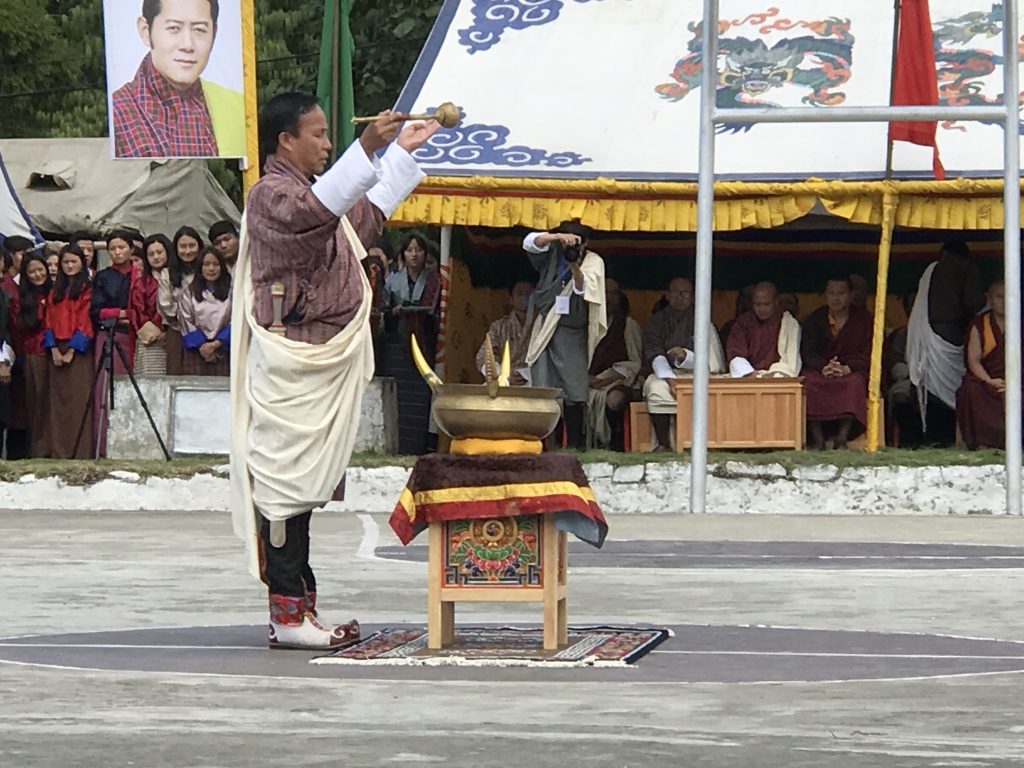
Before the ceremony began, we met the Vice Chancellor of RUB (Royal University of Bhutan), Nidub Dorji, (making the marchang offering in the photo above) who (we realized somewhat belatedly) had been kind enough to write to the home minister to help get Zoë a visa at the eleventh hour.
We also met the head of the Indian army base and his wife (with James, below), who was lovely–we were sad to learn that they were moving to Haa the following day.
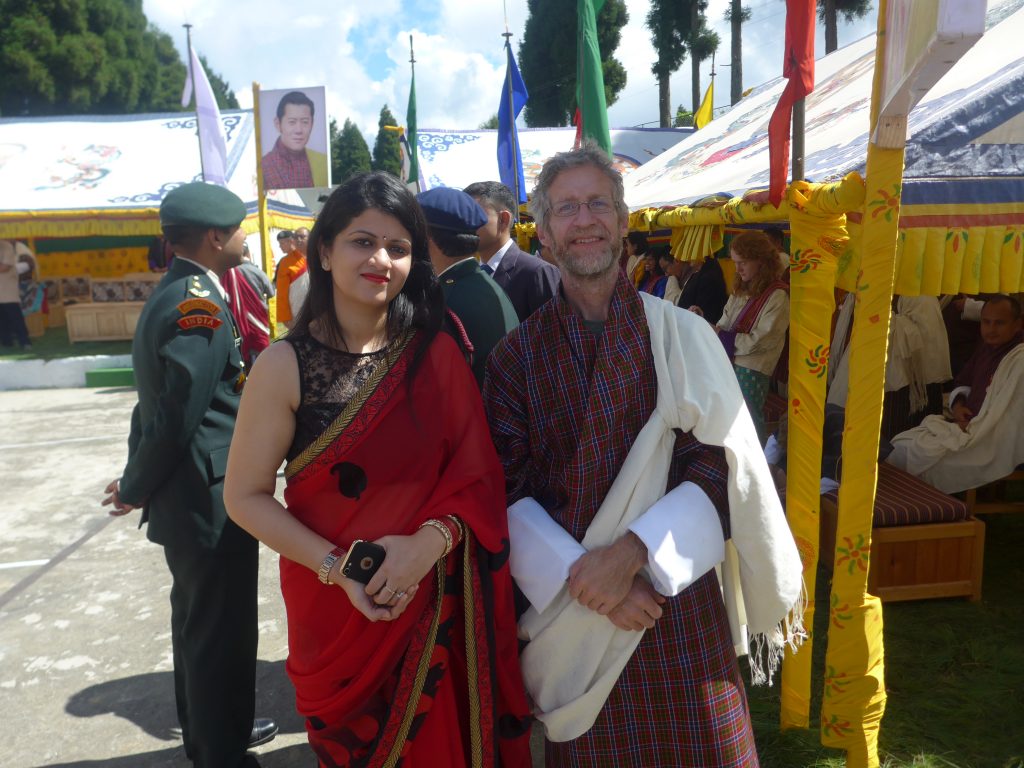
The unveiling of the college plaque was prepared by a blessed water ceremony, similar to that performed for the consecration of the new academic block:
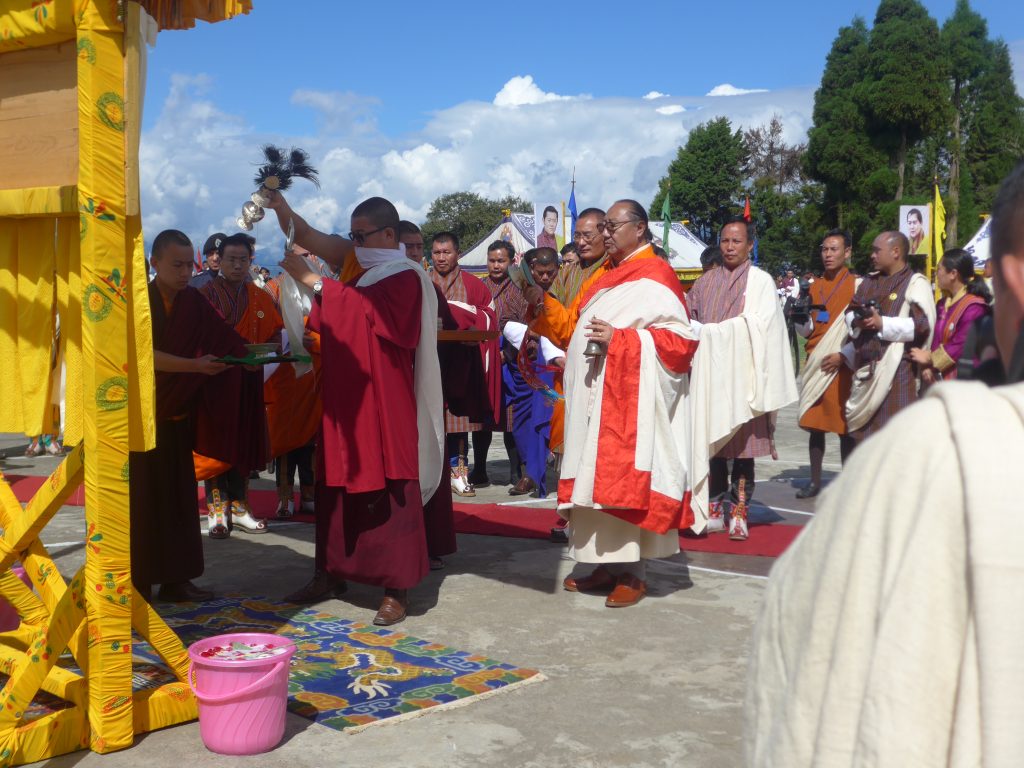
I think Zhugdrel Phuensum Tshogpa is the name for this collection of fruits, which must be ritually served for any ceremony involving a high-ranking official.
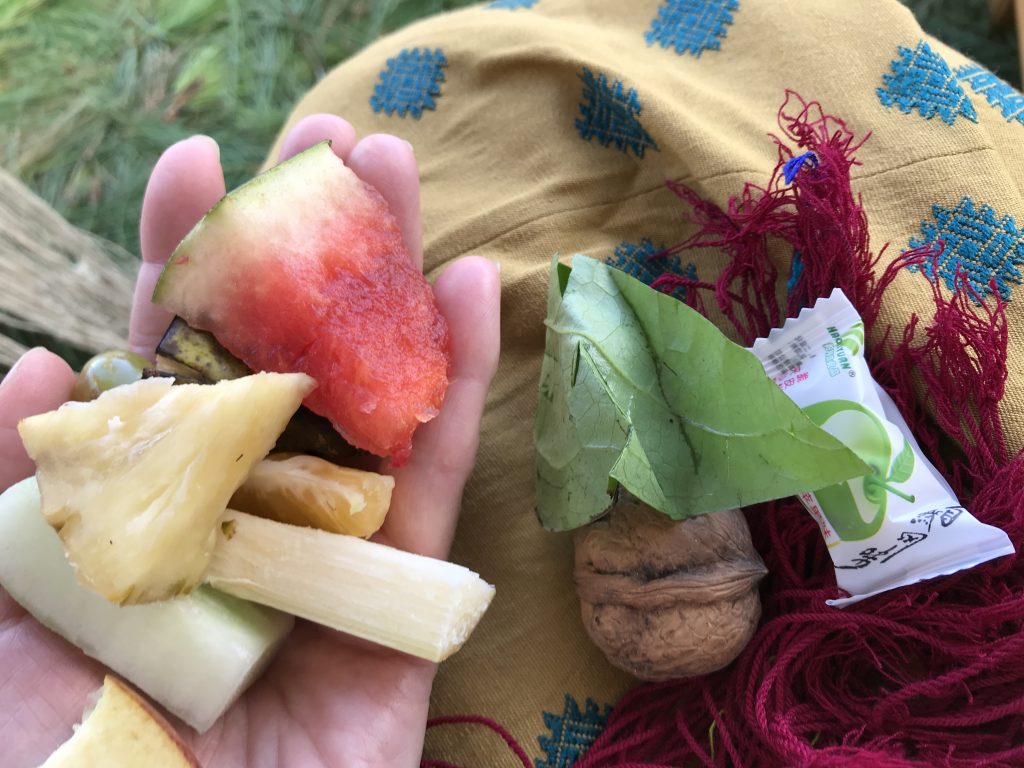
According to the tourist website, Bhutan and Beyond, this ceremony hearkens back to Zhabdrung Nawang Namgyel’s first arrival in present day Punakha in 1637. Announcing that the gathering was a very auspicious omen, he instructed everyone to be seated in rows and served food items including a variety of fruit, while special prayers dedicated to his spiritual lineage were being recited. Today, various foods are served and offerings are made to the guardian deities for their blessings. Only afterwords did we discover that since the food items are auspicious, we were not supposed to show any gesture of refusal. (I refused the betel nut. Ooops. Shacha gave me his for the photo.) Interrupting the Zhugdrel, looking sideways, cracking jokes, and laughing are also improper.
My students performed a dance also—-but not all of them danced.
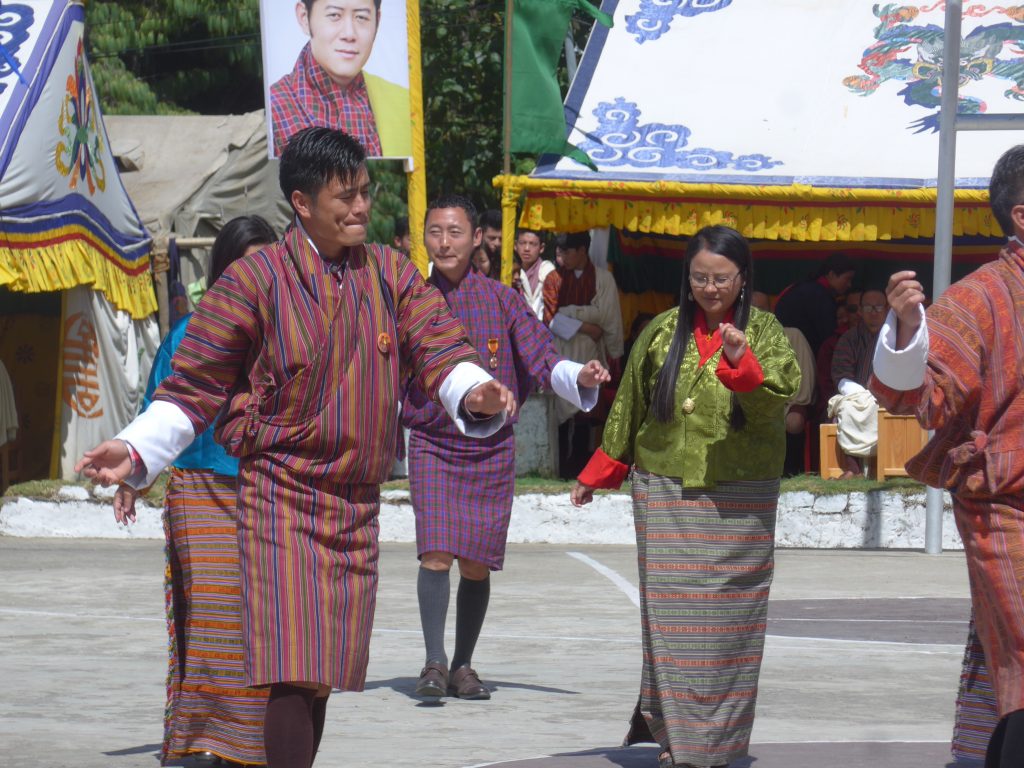
When I asked later why only some of them were in the dance, they replied, “Some had never done the dance before in their lives. There wasn’t time to learn it all from the beginning.” (This offers a different context for their invitation to me to join them in learning the dance earlier that week….) At the end of the dance, they formed a semi-circle around the prime minister, who spoke to them for some five minutes. The students told me later that the prime minister had said to them something like this: “This new college is a big step forward. Don’t take two steps backward now. We are counting on you.”
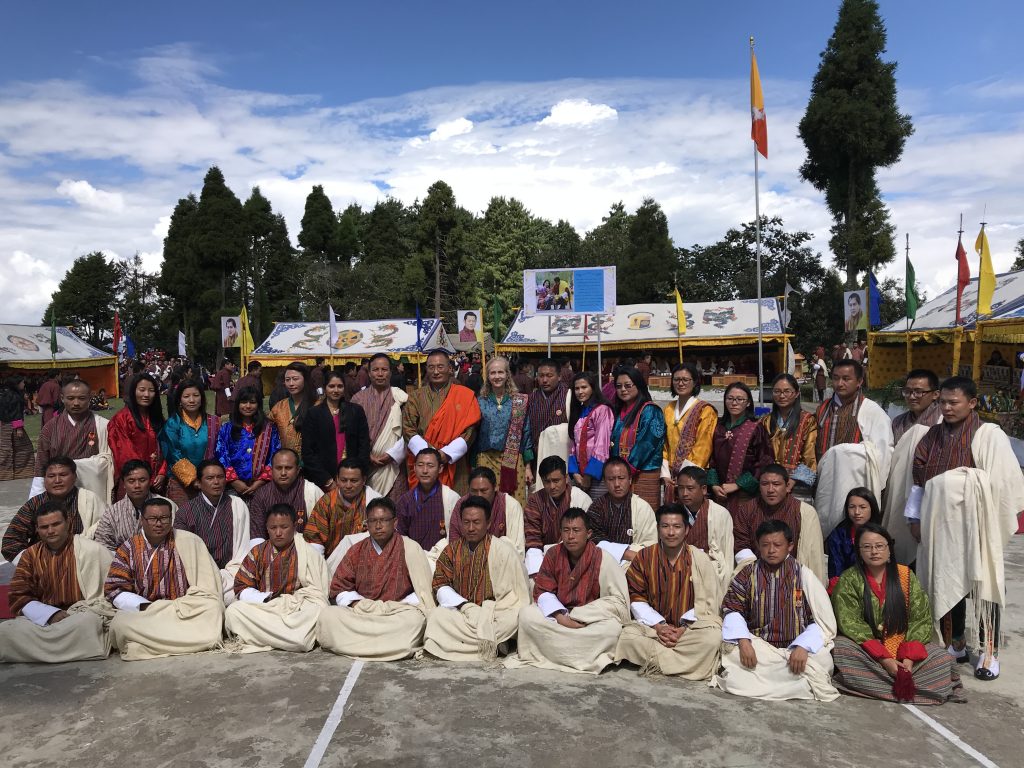
We also had a chance to chat with the prime minister. The first thing he said to me was, “I didn’t realize…how shall I say this? I didn’t realize that the Fulbright program was available throughout one’s working life.” Translation: you’re so old to be a Fulbrighter!
I replied, with great dignity (I’d like to believe), “Senior scholars are a core part of the program.”
“That’s good to know,” he said. “Perhaps when I am finished with this work, I can become a Fulbright senior scholar.”
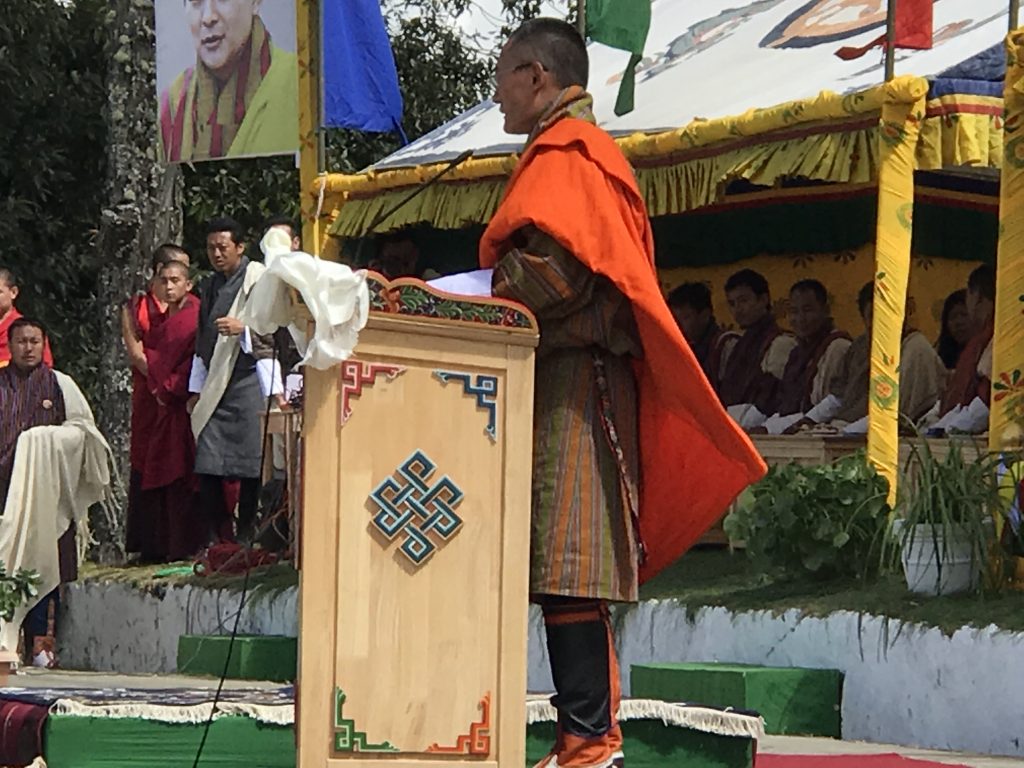
We chatted a bit about Pennsylvania (he did an undergraduate degree in engineering at the University of Pittsburgh on a UN fellowship) and Swarthmore. I mentioned a famous person who had not been accepted, and he riposted, “That’s your claim to shame!” Very quick on his feet! I suggested that he and James should talk as engineers—and after embedded systems were mentioned, I think I was the one who said James was interested in hydropower control issues. The prime minister said that would be very useful to Bhutan, James asked for an introduction to someone who could get him some data, and the prime minister turned to the vice-chancellor and asked him to help make this happen. James has now been thrown in at the deep end.
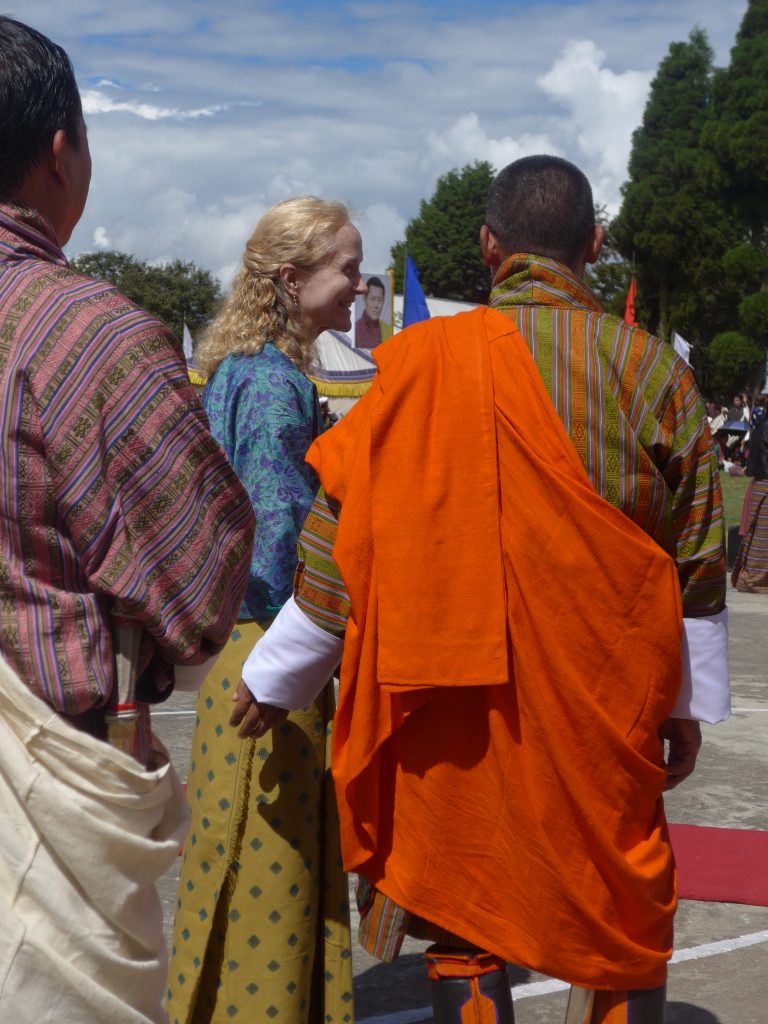
Coming back after inaugurating the airport, the prime minister stopped by again. He asked Zoë where she was going to university. “Cambridge in Massachusetts or Cambridge in England?” “England,” she replied. “Ah, as far away as possible,” he said, looking at her parents knowingly. As he was talking with her, he was hard at work cracking a walnut. At the end of the conversation, he put the walnut down in front of Jeremy with a smile, and turned away. We were all very charmed.
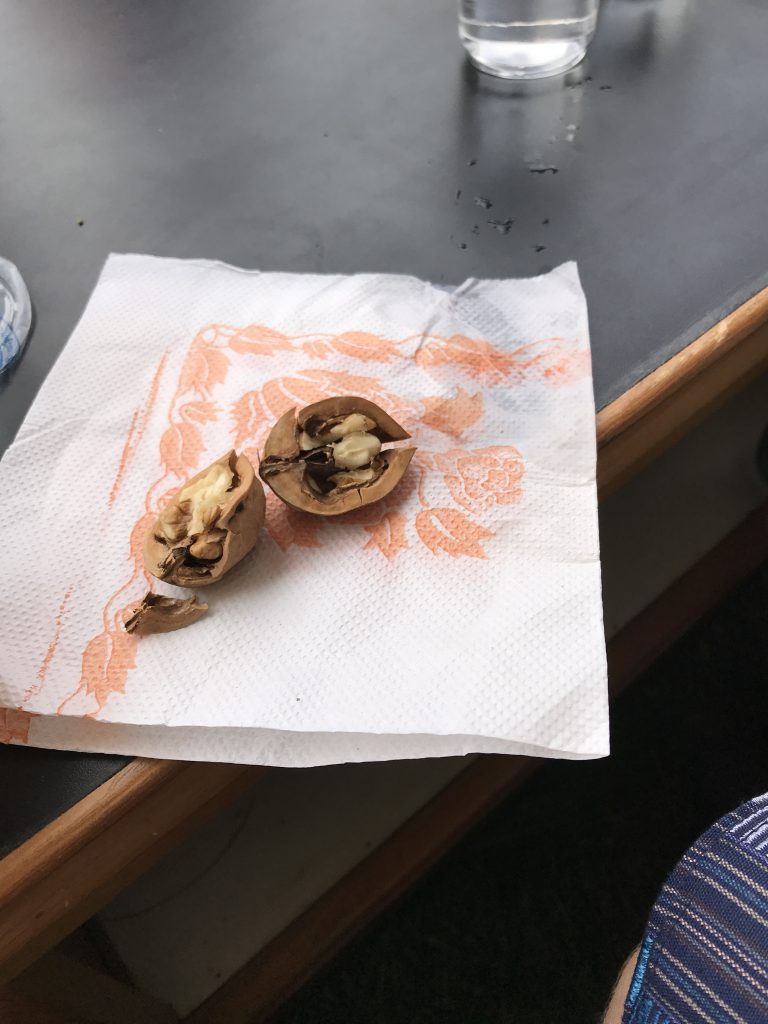
The dignitaries served lunch (prepared by Sherubtse staff) to “the people”
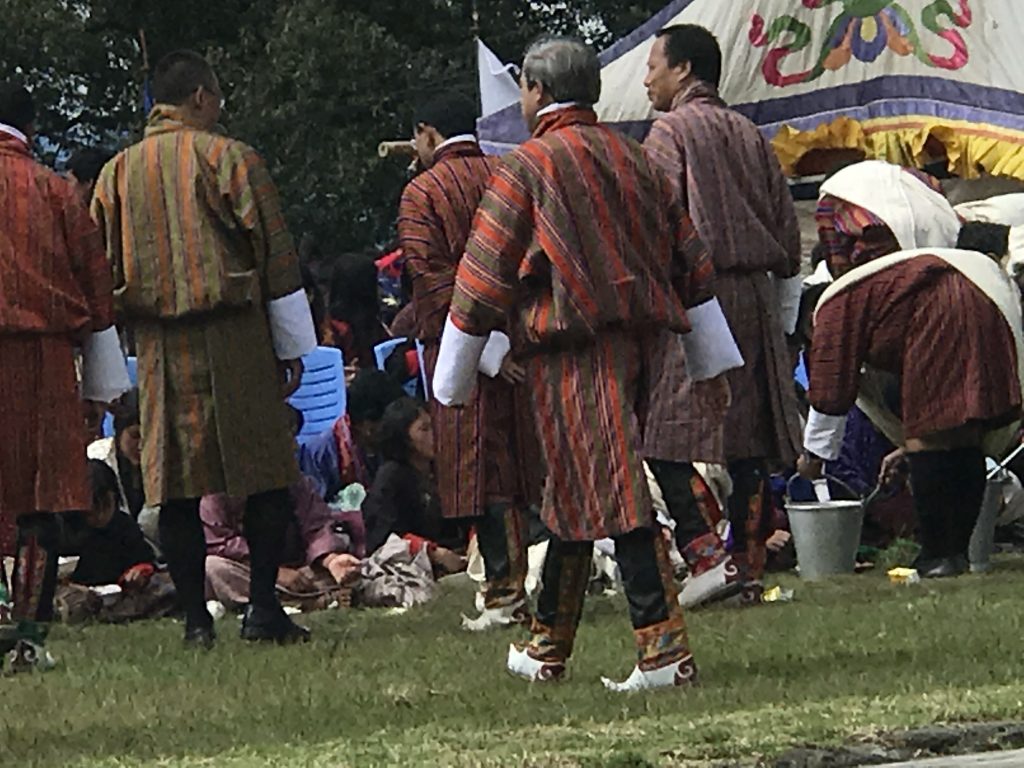
and then the higher-level guests enjoyed a buffet lunch brought from Lingkpa Lodge (on the way to Trashigang). We might have to go stay and Lingkpa Lodge in order to learn how to make their dal.
The whole family joined the students and other dignitaries in the Tashi Leybay dance, which again made it feel as if we had a real stake in the new college. Then a few more group photos until I rang Pema to ask if we could get a ride home.
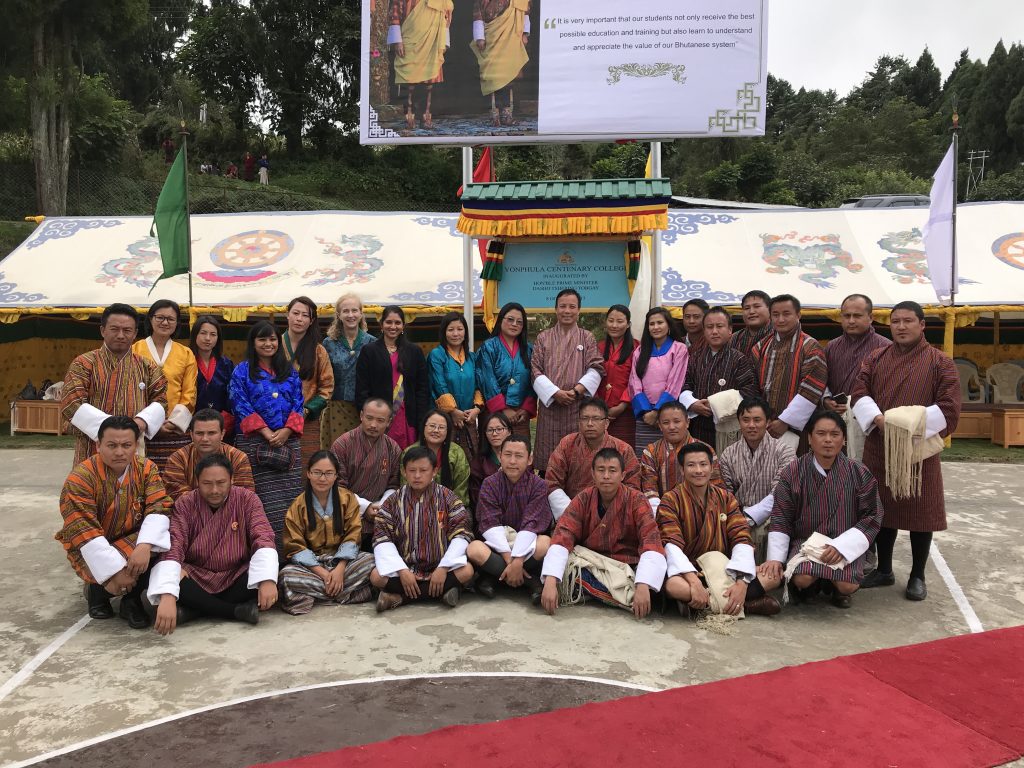
“I’m behind the tank,” he replied—or so I thought. Turned out he meant “tent”—he was right behind us. On our way down the mountain, we saw students being transported in the back of a truck: not the vehicle one would expect in a US context. (Jeremy accidentally did something to James’s camera, hence the odd appearance.)
